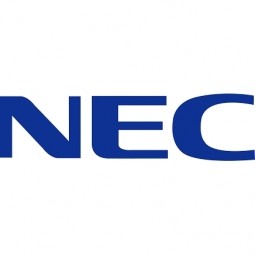
技术
- 功能应用 - 远程监控系统
- 网络与连接 - WiFi
适用行业
- 医疗保健和医院
适用功能
- 商业运营
用例
- 实时定位系统 (RTLS)
客户
肿瘤诊疗中心
关于客户
罗马尼亚布拉索夫肿瘤诊疗中心
挑战
布拉索夫肿瘤诊断和治疗中心希望为患者提供尽可能多的漫游自由,同时确保最佳的患者安全和保障。该中心需要一个足够的无线语音通信和消息传递解决方案,让患者相信医务人员随时待命,并在紧急需要时减轻护士和医生的压力水平。
解决方案
ICCO/Romtelecom 提出了一个 NEC UNIVERGE SV8100 通信服务器以及 IP DECT 无线基础设施,为整个中心的移动通信提供全面覆盖。
该系统支持大约 150 个固定电话终端(模拟和 IP)和 100 多个无线 IP DECT 电话和消息设备。医务人员使用 G955 和 I755 IP DECT 手机。后者专为在苛刻的环境中使用而设计。 NEC 的 M155 消息传递设备为患者提供。
这些卫生腕带套装易于佩戴和使用,可实现直接语音联系以及消息/警报。
NEC 的 DECT 基础设施与 Ekahau 的实时定位解决方案相连接。 ICCO 消息传递应用程序从两种解决方案中收集数据,对其进行解释并将它们发送到中央接收处,指示发送者的位置。
Ekahau 领先的 RTLS 解决方案直接在正确的位置显示患者的位置——确保正确的护理水平。该中心希望很快通过 Business ConneCT Operator 进一步增强该解决方案。
运营影响

Case Study missing?
Start adding your own!
Register with your work email and create a new case study profile for your business.
相关案例.

Case Study
Hospital Inventory Management
The hospital supply chain team is responsible for ensuring that the right medical supplies are readily available to clinicians when and where needed, and to do so in the most efficient manner possible. However, many of the systems and processes in use at the cancer center for supply chain management were not best suited to support these goals. Barcoding technology, a commonly used method for inventory management of medical supplies, is labor intensive, time consuming, does not provide real-time visibility into inventory levels and can be prone to error. Consequently, the lack of accurate and real-time visibility into inventory levels across multiple supply rooms in multiple hospital facilities creates additional inefficiency in the system causing over-ordering, hoarding, and wasted supplies. Other sources of waste and cost were also identified as candidates for improvement. Existing systems and processes did not provide adequate security for high-cost inventory within the hospital, which was another driver of cost. A lack of visibility into expiration dates for supplies resulted in supplies being wasted due to past expiry dates. Storage of supplies was also a key consideration given the location of the cancer center’s facilities in a dense urban setting, where space is always at a premium. In order to address the challenges outlined above, the hospital sought a solution that would provide real-time inventory information with high levels of accuracy, reduce the level of manual effort required and enable data driven decision making to ensure that the right supplies were readily available to clinicians in the right location at the right time.

Case Study
Gas Pipeline Monitoring System for Hospitals
This system integrator focuses on providing centralized gas pipeline monitoring systems for hospitals. The service they provide makes it possible for hospitals to reduce both maintenance and labor costs. Since hospitals may not have an existing network suitable for this type of system, GPRS communication provides an easy and ready-to-use solution for remote, distributed monitoring systems System Requirements - GPRS communication - Seamless connection with SCADA software - Simple, front-end control capability - Expandable I/O channels - Combine AI, DI, and DO channels

Case Study
Driving Digital Transformations for Vitro Diagnostic Medical Devices
Diagnostic devices play a vital role in helping to improve healthcare delivery. In fact, an estimated 60 percent of the world’s medical decisions are made with support from in vitrodiagnostics (IVD) solutions, such as those provided by Roche Diagnostics, an industry leader. As the demand for medical diagnostic services grows rapidly in hospitals and clinics across China, so does the market for IVD solutions. In addition, the typically high cost of these diagnostic devices means that comprehensive post-sales services are needed. Wanteed to improve three portions of thr IVD:1. Remotely monitor and manage IVD devices as fixed assets.2. Optimizing device availability with predictive maintenance.3. Recommending the best IVD solution for a customer’s needs.

Case Study
HaemoCloud Global Blood Management System
1) Deliver a connected digital product system to protect and increase the differentiated value of Haemonetics blood and plasma solutions. 2) Improve patient outcomes by increasing the efficiency of blood supply flows. 3) Navigate and satisfy a complex web of global regulatory compliance requirements. 4) Reduce costly and labor-intensive maintenance procedures.

Case Study
Harnessing real-time data to give a holistic picture of patient health
Every day, vast quantities of data are collected about patients as they pass through health service organizations—from operational data such as treatment history and medications to physiological data captured by medical devices. The insights hidden within this treasure trove of data can be used to support more personalized treatments, more accurate diagnosis and more advanced preparative care. But since the information is generated faster than most organizations can consume it, unlocking the power of this big data can be a struggle. This type of predictive approach not only improves patient care—it also helps to reduce costs, because in the healthcare industry, prevention is almost always more cost-effective than treatment. However, collecting, analyzing and presenting these data-streams in a way that clinicians can easily understand can pose a significant technical challenge.




